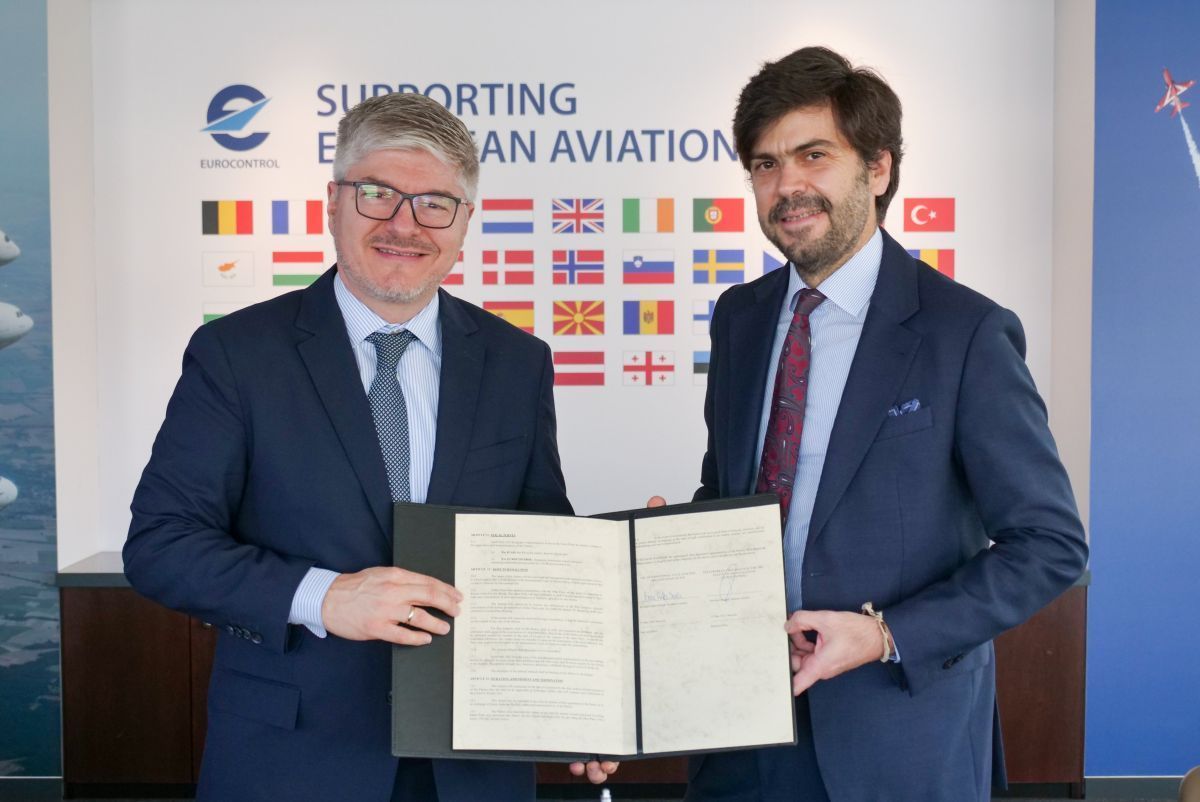Eurocontrol and ICAO Strengthen Cooperation to Improve Aircraft Tracking Around the Globe
The International Civil Aviation Organization (ICAO) and Eurocontrol on Thursday agreed to strengthen cooperation on the safety-vital topic of aircraft in distress.
The announcement builds on the existing agreement signed in March 1996 to support the ultimate goal of improving aircraft tracking and identifying distress situations during a flight, in order to initiate a timely rescue operation.
Signed in Brussels, the agreement tasks Eurocontrol with the development and hosting of LADR – a Location of an Aircraft in Distress Repository – and an Operational Control Directory (OPS CTRL).
“This is a major step forward in addressing a global aviation need and we are delighted to be supporting global aviation and the flying public,” said Eurocontrol Director General Raúl Medina.

ICAO Secretary General Juan Carlos Salazar and Eurocontrol Director General Raúl Medina. Photo source: Eurocontrol
LADR is a web-based repository that will collect, store and provide access to the last known position of an aircraft in distress information. OPS CTRL will facilitate communication and exchange of information between air operators, air navigation service providers and rescue coordination centres. Both will play a major part in assisting rescue efforts by coordinating all affected actors in the event of an aircraft in distress.
“Thanks to LADR, impacted stakeholders will be able to locate swiftly an aircraft in distress, greatly speeding up crucial search, rescue and recovery capabilities when a distress turns into an accident,” Medina added.
LADR is part of the Global Aeronautical Distress and Safety System (GADSS) that covers autonomous distress tracking equipment on airframes, and improved systems and procedures to collect and share last known aircraft location information.
The GADSS concept was developed by ICAO, with the help of worldwide experts and European subject matter experts led by Eurocontrol, following two high-profile incidents involving airliners that went missing triggering complex and highly costly search efforts: the crash of Air France Flight 447 on 1 June 2009 and the disappearance of Malaysia Airlines flight 370 on 8 March 2014.
LADR will allow data submissions from accredited contributors in order to ensure all information related to the location of an aircraft in distress from suitably equipped aircraft is stored and made available to users. In case of an ‘aircraft in distress’ anywhere, anytime around the globe, LADR will provide a single point of access to the required information and notify the appropriate stakeholders, including aircraft operators, air navigation service providers and search and rescue, of a potential event.
An initial version of LADR with core-functionality is expected to be delivered by end of 2023, and an enhanced and scaled-up version that conforms with existing requirements (ICAO Doc 10150) is expected to be delivered by November 2024.






